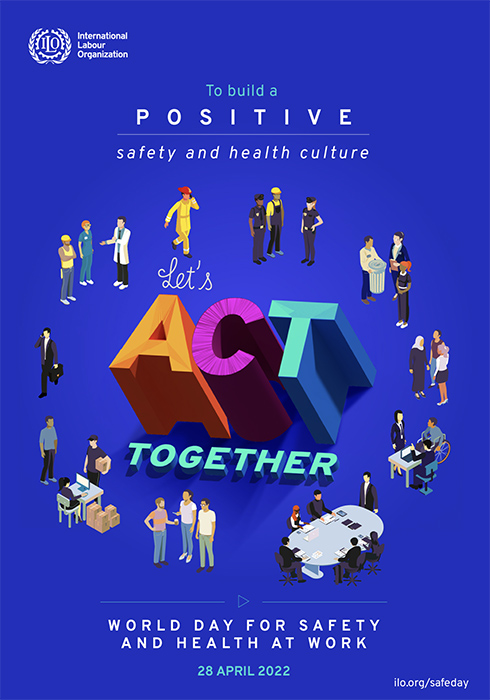Most Americans are unfamiliar with a UN agency called the International Labour Organization (ILO) headquartered in Geneva. It is not a union. Instead it is an agency that purports to promote rights at work, encourage decent employment opportunities, enhance social protection and strengthen dialogue on work-related issues. That dialogue is supposed to occur among “social partners” — workers, employers and governments. [Bullying has been noticed in their projects involving workplace harassment.]
Dialogue requires cooperation and collaboration among the three “partners” as the ILO educates the world about emergent workplace issues through its research and programs.
In concert with the World Health Organization (WHO), the ILO seeks to create and implement ways to manage occupational health and safety for all workers. The range of occupational hazards cover five (5) domains of risk: infectious, ergonomic, physical, chemical, and psycho-social. Yes. Psychosocial safety. [Listen to the Workplace Bullying Podcast Episode 1.7 The World Addresses Psychosocial Risks in Workplaces, Not the U.S. with Attorney Ellen Pinkos Cobb, author of Managing Psychosocial Hazards and Work-Related Stress in Today’s Work Environment: International Insights for U.S. Organizations.]
It’s little wonder that few in the U.S. outside the OHS community know about the ILO’s work. In the U.S., there is no cooperative work with tripartite input like the ILO uses and recommends. If anything, employers coerce government to side with them against workers. Hence the paucity of worker safety protections in the U.S. compared to other rich nations.
Further, psychosocial risk factors, such as bullying are unexplored in the U.S. The inclusion of social interactions, which can be positive or negative, is essential to understanding work environments that enable bullying and abuse. We barely even use the term “work environment” when considering causal factors. In our individualistic culture, we prefer to refer to toxic people rather than the more accurate depiction of toxic work environments. Fix one “bad apple” and the problem is fixed, we kid ourselves.
We need a more Euro-centric view of workplaces. The ILO provides that perspective.

Now comes the announcement of the 2022 World Day for Safety and Health at Work — April 28.
The centerpiece of the Day is collaborative action and dialogue to create and sustain positive, safe and healthy workplace cultures.
As the ILO says, “Social dialogue not only contributes to improving OSH policies and strategies, but it is also essential to build ownership and commitment, easing the way for their rapid and more effective implementation … a strong OSH culture is one in which the right to a safe and healthy working environment is valued and promoted by both management and workers. A positive OSH culture is built on inclusion, through the meaningful involvement of all parties in the ongoing improvement of safety and health.”
In other words, we can only accomplish the goal together. Understanding, aware employers — responsive governments willing to judiciously regulate to prevent health harm — workers free to speak up (with psychological safety) about their right to have a psychosocial hazard-free workplace.
On April 28, Americans have an excuse to join the rest of the world and the Occupational Health and Safety professionals who care about making workplaces free from the risk of emotional injuries.

